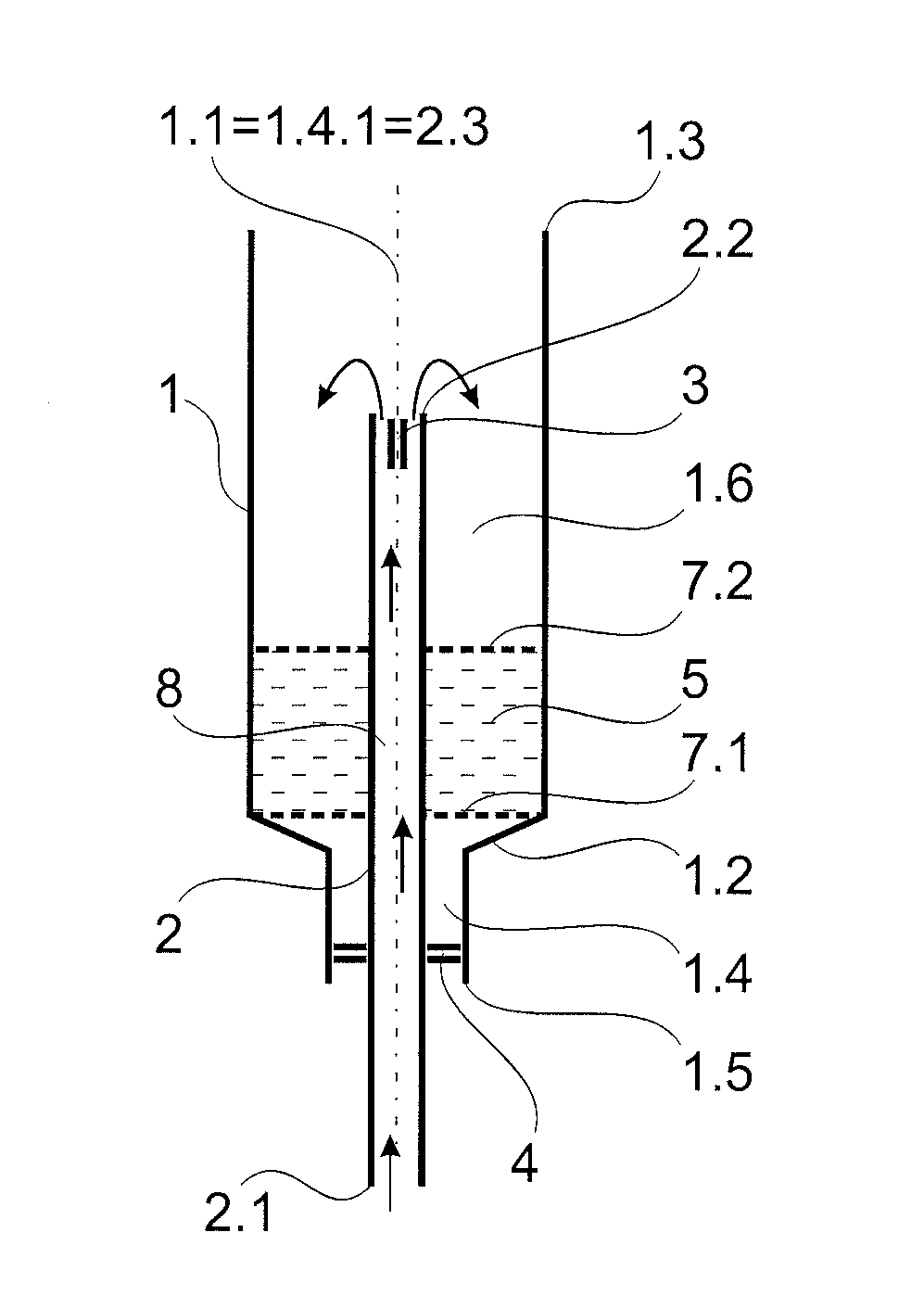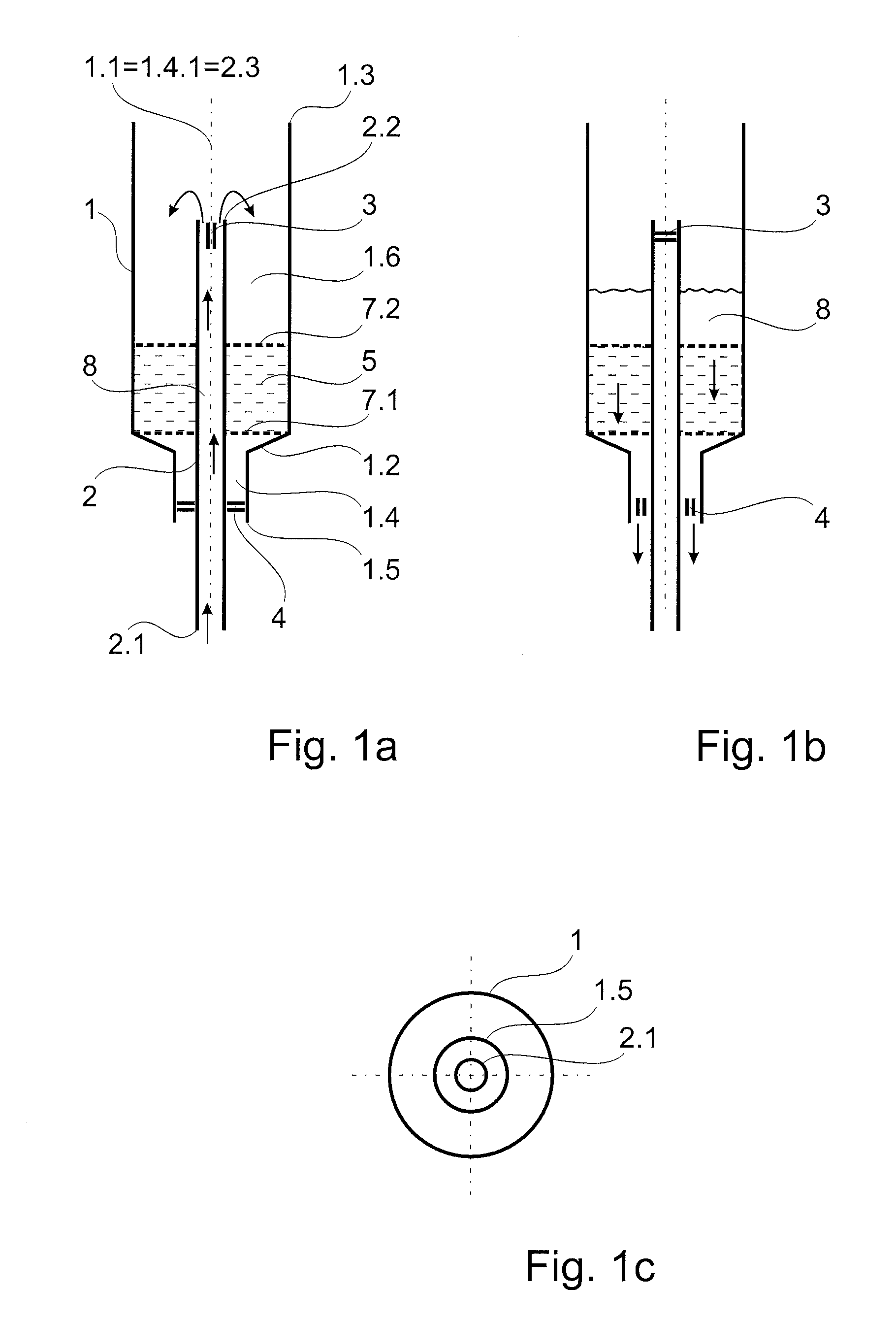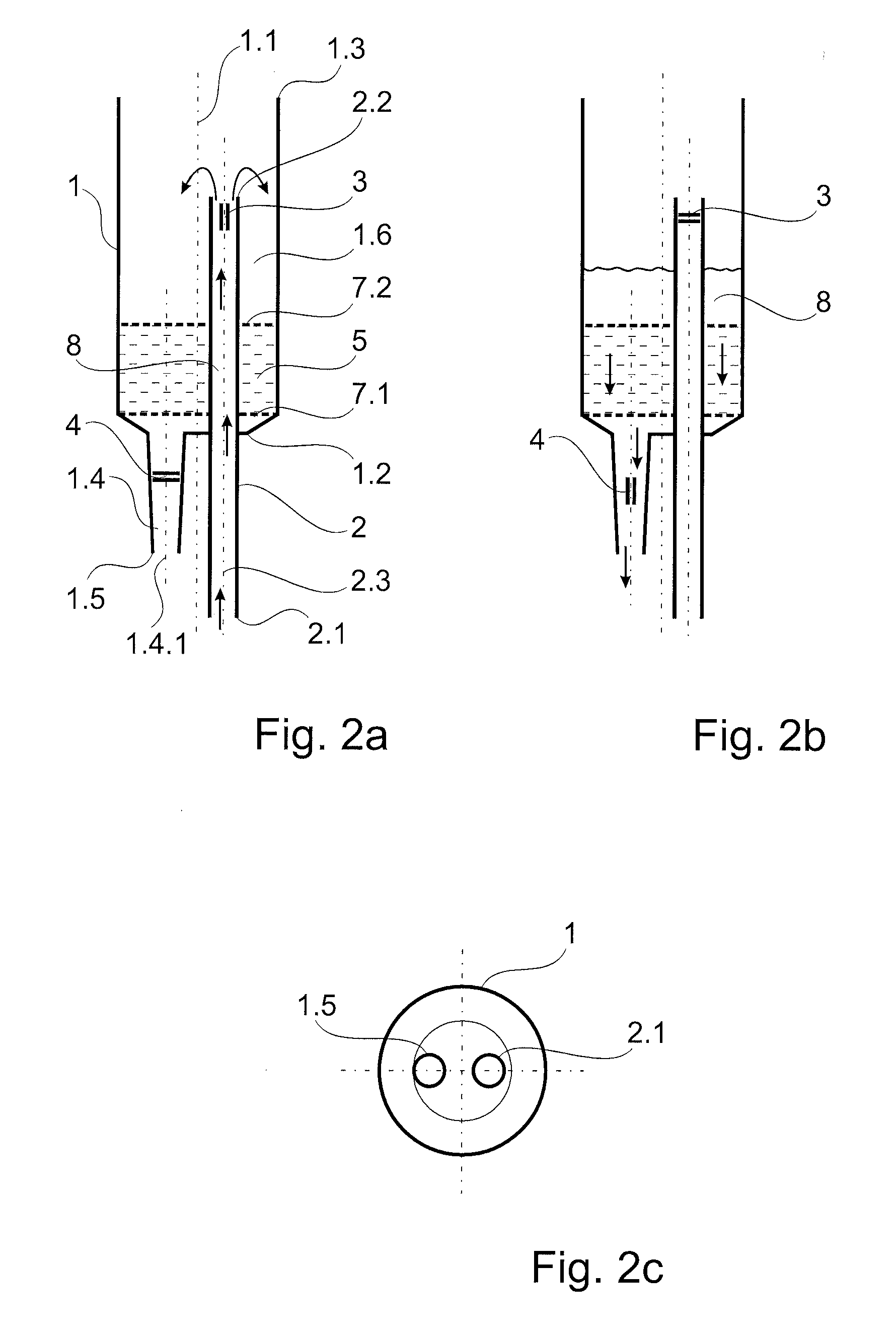Chromatography pipette tip
a technology of chromatography and pipette, which is applied in the direction of pipettes/pipettes, laboratory equipment, chemistry apparatus and processes, etc., can solve the problems of large variance in results, unreliable start-up, and individual volumes of sample liquid that require different lengths of time,
- Summary
- Abstract
- Description
- Claims
- Application Information
AI Technical Summary
Benefits of technology
Problems solved by technology
Method used
Image
Examples
Embodiment Construction
[0058]A chromatography pipette tip according to the invention, i.e., a pipette tip which is provided for carrying out methods of chromatography in conjunction with metering aids such as pipettors, as can be seen in all of the schematic diagrams of the embodiment examples, basically has a first vessel 1 with a first vessel axis 1.1. Like conventional pipette tips, the first vessel 1 is preferably cylindrical, conical or has a combination of cylindrical and conical portions. It has a base surface 1.2 which is preferably conical and an end 1.3 which is located opposite the base surface and which serves as a mounting lip so that it can be connected with a metering aid. An elongate first vessel channel 1.4 with a channel axis 1.4.1 opening into a bottom orifice 1.5 of the first vessel is formed in the base surface 1.2. The bottom orifice 1.5 of the first vessel can preferably be sealed from the environment. The sealing is carried out by means of a second valve 4 in most of the embodiment...
PUM
 Login to View More
Login to View More Abstract
Description
Claims
Application Information
 Login to View More
Login to View More - R&D
- Intellectual Property
- Life Sciences
- Materials
- Tech Scout
- Unparalleled Data Quality
- Higher Quality Content
- 60% Fewer Hallucinations
Browse by: Latest US Patents, China's latest patents, Technical Efficacy Thesaurus, Application Domain, Technology Topic, Popular Technical Reports.
© 2025 PatSnap. All rights reserved.Legal|Privacy policy|Modern Slavery Act Transparency Statement|Sitemap|About US| Contact US: help@patsnap.com



